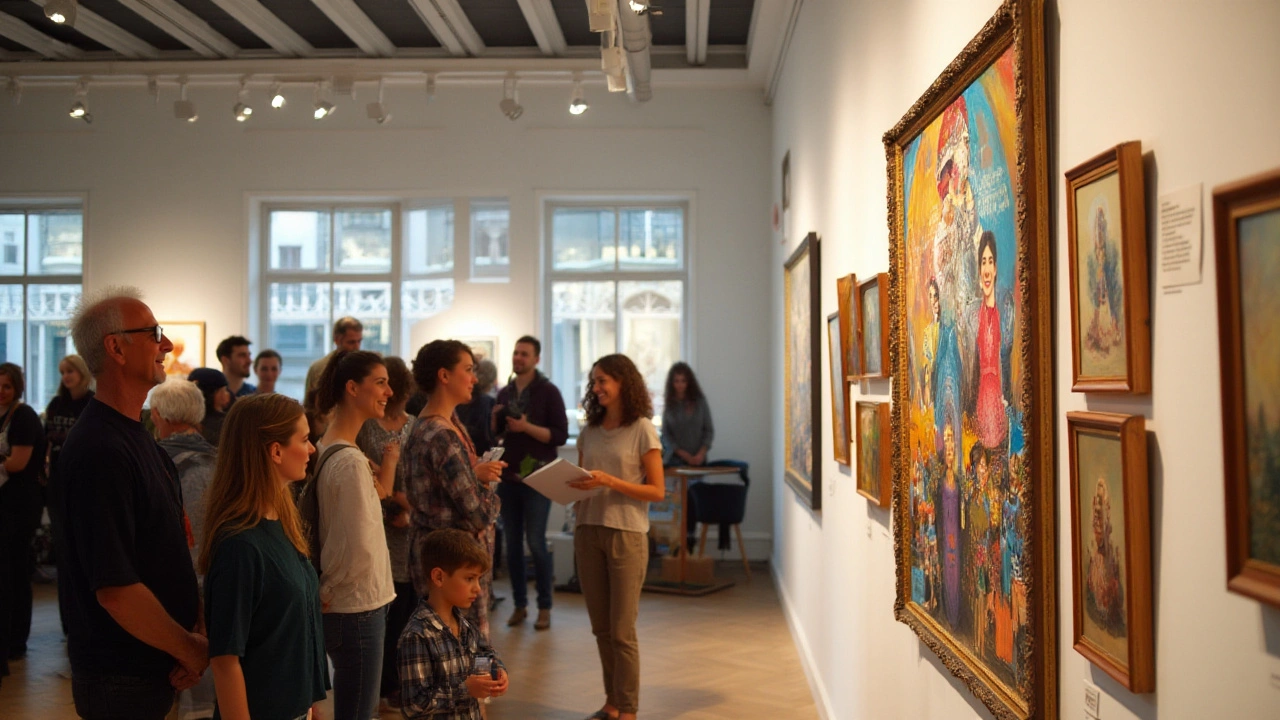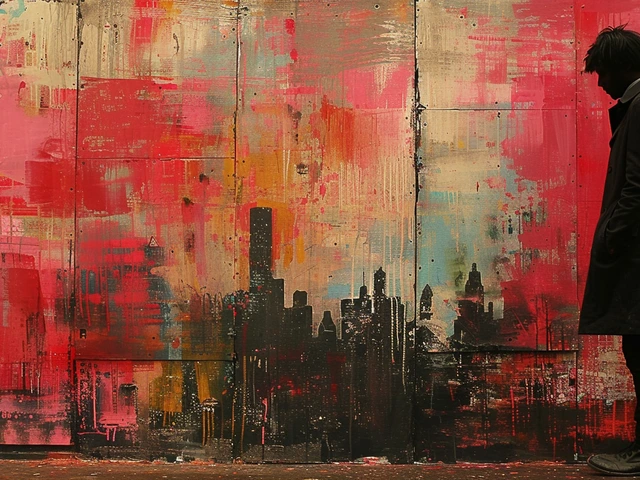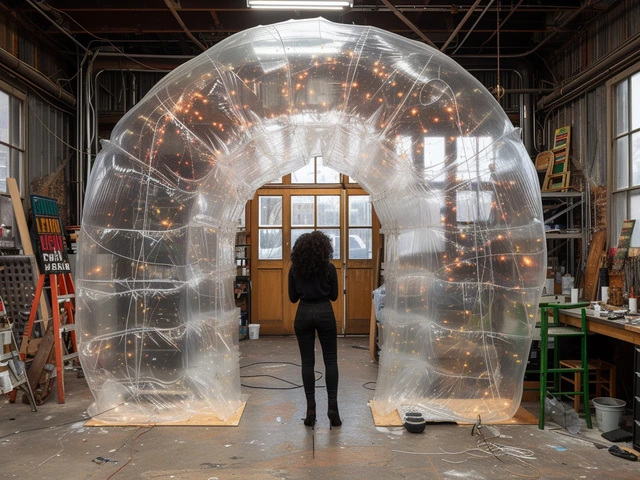Contemporary art is like a mirror, reflecting the nuances and intricacies of our modern world. It’s a space where traditional boundaries blur, making room for new, daring expressions. From digital installations to street murals, the art scene today is rich with innovation and creativity.
For those looking to dive into this vibrant world, understanding the basics is crucial. What defines contemporary art? It’s art created from the late 20th century to the present, but there’s more to it than just timelines. It’s about ideas, experimentation, and a break from convention.
The influential movements and styles shaping today’s art landscape are numerous. From abstract expressionism to minimalism, each style offers a unique lens through which we can view the world.
Artists like Banksy, Yayoi Kusama, and Ai Weiwei have become household names, each bringing their distinct voice to the fore. Their works do not only capture the eye but also provoke thought, challenge norms, and often, inspire social dialogue.
Engaging with contemporary art doesn’t have to be intimidating. Attend gallery exhibitions, explore online platforms, or even try your hand at creating your own pieces. The key is to remain open, curious, and willing to explore.
- Understanding Contemporary Art
- Significant Movements and Styles
- Influential Artists of Today
- Engaging with Contemporary Art
Understanding Contemporary Art
Contemporary art is a term that often sparks both curiosity and confusion. This form of art, created from the late 20th century onward, mirrors our rapidly changing world. It's defined less by strict parameters and more by the fluidity and diversity of styles, mediums, and concepts it embraces. Unlike earlier art periods, contemporary works often challenge traditional norms and provoke thought with their experimental nature.
One way to think about contemporary art is to consider it as a broad dialogue, a conversation among artists, viewers, and society. This dialogue addresses current issues, personal experiences, and explores innovative ideas. The emphasis is on the concept or the idea behind the artwork rather than its technical execution alone. As a result, contemporary art can appear in many forms, from paintings and sculptures to digital media and performance art.
A hallmark of contemporary art is its inclusive nature. It doesn't conform to a single style or movement. Instead, it encompasses a variety of practices, including but not limited to conceptual art, installation art, video art, and street art. This diversity allows artists to experiment with new techniques, materials, and ideas, pushing the boundaries of what art can be. For example, abstract expressionism, minimalism, and pop art all fall under the umbrella of contemporary art, each offering a unique perspective on visual expression.
"Art must be an integral part of life, something that stirs the imagination, illuminates the mind and arouses the senses." - Solomon R. Guggenheim
A key aspect of contemporary art is its ability to address and reflect societal issues. Artists often use their works to comment on topics such as politics, culture, identity, and technology. By doing so, they encourage viewers to engage with and think deeply about these subjects. This reflective quality can be seen in the works of many prominent contemporary artists, such as Ai Weiwei, who uses his art to criticize government policies and advocate for human rights.
The role of mixed media in contemporary art cannot be overstated. Artists are no longer restricted to traditional materials like canvas or marble. They incorporate everyday objects, digital technology, and even live performance into their pieces. This blending of media creates immersive and interactive experiences for viewers. For instance, the digital installations of teamLab, a Japanese art collective, transform spaces into dynamic, participatory environments that invite viewers to become a part of the art itself.
So, why should we care about contemporary art? For starters, it challenges us to see the world differently. It prompts us to question our assumptions, consider new perspectives, and engage with complex themes. Additionally, contemporary art is a reflection of our time. It captures the zeitgeist, offering future generations insights into our experiences, values, and challenges. From an educational standpoint, experiencing contemporary art can broaden one's understanding of the world and encourage critical thinking.
If you're new to contemporary art, start by exploring local galleries and museums. Many institutions, such as the Auckland Art Gallery, host exhibitions featuring contemporary works from both New Zealand and international artists. Don't hesitate to attend workshops or lectures—they're great opportunities to deepen your understanding and appreciation of this dynamic field. Remember, contemporary art is meant to be experienced and interpreted subjectively. There's no right or wrong way to engage with it, so let your curiosity guide you.
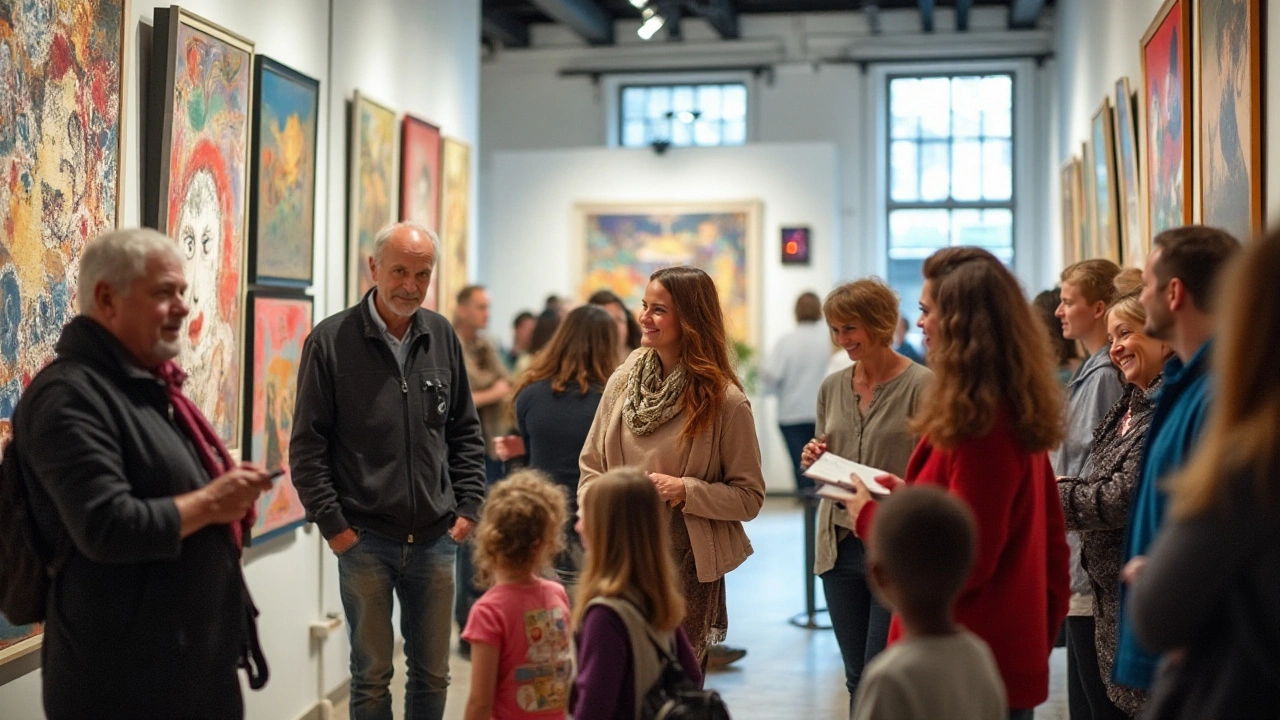
Significant Movements and Styles
In the ever-evolving realm of contemporary art, several movements and styles have emerged, each contributing uniquely to the world stage. One of the most influential is abstract expressionism. Originating in the 1940s and 1950s, it was marked by its focus on spontaneous, automatic, or subconscious creation. Artists like Jackson Pollock and Mark Rothko became icons, pushing boundaries with their use of color, form, and emotional intensity. Their work was not just about what you see but what you feel.
Another pivotal movement is minimalism, which stripped art down to its most basic form, focusing on simplicity and the essence of the medium. Artists like Donald Judd and Agnes Martin sought to remove all unnecessary elements, aiming for purity in their work. This style challenged viewers to see beauty in simplicity and often questioned traditional notions of art complexity.
"The more you reduce the amount of information, the more meaning you get from the changes that do happen," noted an art critic in describing minimalism's impact.
In the late 20th century, the rise of pop art brought a commercial, almost playful aesthetic to the forefront. Artists like Andy Warhol and Roy Lichtenstein used imagery from popular culture, including advertising and comic books, to comment on and critique contemporary society. Warhol's Campbell's Soup Cans and Lichtenstein's comic strip-style paintings are quintessential examples. These works blur the lines between high art and mass culture, reflecting the consumerist culture of their time.
The 21st century saw the blossoming of digital art and new media, with artists leveraging technology to create immersive and interactive pieces. This form encompasses everything from digital painting to virtual reality installations. Pioneers like Beeple have garnered massive attention, with his digital pieces selling for millions and bringing NFTs (non-fungible tokens) into the spotlight. Digital art not only redefines the way art is created but also how it is shared and experienced.
Street art is another dynamic movement that has gained significant traction. Street artists like Banksy have transformed urban landscapes into open-air galleries, using graffiti and murals to make powerful social and political statements. This movement has democratized art, making it accessible to all and challenging the confines of gallery walls. The ephemeral nature of street art also adds an element of urgency and relevance.
Conceptual art focuses on the idea behind the work rather than its aesthetic. It's about the concept, making the audience think and engage with the underlying message. Artists like Sol LeWitt and Yoko Ono have used this style to push intellectual boundaries, asking viewers to question reality and their perceptions.
The diversity within contemporary art styles underscores its vibrant and ever-changing nature. Each movement and style offers a different perspective on our world, reflecting various societal changes and technological advancements. Whether it's the emotional depth of abstract expressionism, the simplicity of minimalism, the commercial critique of pop art, the technological innovations of digital art, the democratizing force of street art, or the intellectual provocations of conceptual art, there is something for everyone in the dynamic realm of contemporary art.
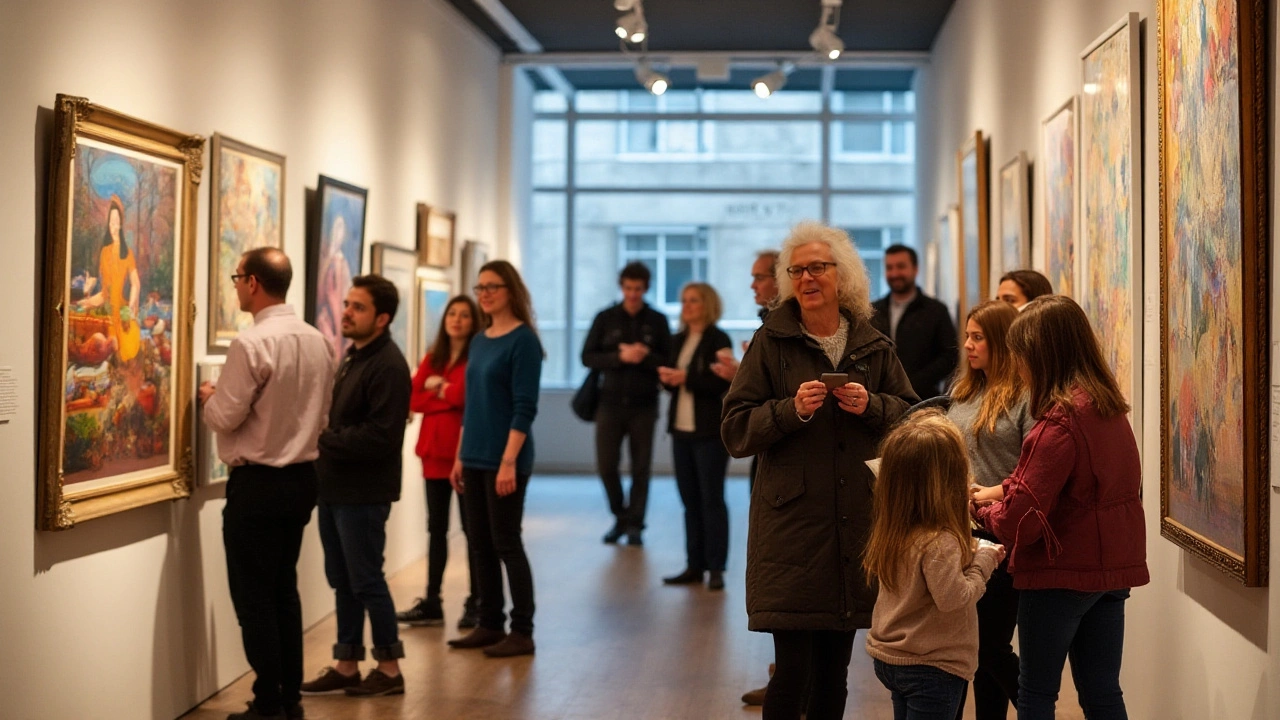
Influential Artists of Today
When diving into the world of contemporary art, certain names stand out for their remarkable contributions and distinctive styles. These artists not only captivate with their unique creations but also stir conversations and often challenge societal boundaries.
Take Banksy for example, a name synonymous with clandestine art. This British street artist has managed to maintain anonymity while making waves globally with provocative pieces. His art often reflects political and social commentary, seamlessly blending elements of satire with poignant messages. One of his iconic works, ‘Girl with a Balloon,’ even self-destructed at a Sotheby's auction immediately after being sold for over a million dollars. Banksy’s anonymity and impactful art make him an enigma and a revolutionary figure in modern art.
Another luminary in this realm is Yayoi Kusama. Known for her mesmerizing polka dots and immersive installations, Kusama’s works are often reflections of her personal struggles with mental health. Her ‘Infinity Mirror Rooms’ provide viewers an illusion of endless space and have become some of the most recognizable contemporary art installations worldwide. Besides being a master of visual art, Kusama’s dedication to her craft, even at her advanced age, is truly inspiring.
“I want to keep creating art until my last breath.” – Yayoi Kusama
Then there’s Ai Weiwei, who has cemented his place as a major figure in contemporary art and activism. This Chinese artist and activist often delves into themes of human rights, freedom of expression, and government transparency. Ai’s installation ‘Sunflower Seeds,’ comprised of millions of hand-painted porcelain seeds, speaks volumes about mass consumption and individuality. His work often transcends traditional art forms, making bold political statements and pushing for change.
Marina Abramović is another name every art enthusiast must be familiar with. Known as the ‘grandmother of performance art,’ Abramović’s performances often test the limits of her physical and mental endurance. Her piece ‘The Artist is Present,’ performed at the Museum of Modern Art in New York, involved sitting silently and maintaining eye contact with museum visitors for hours on end. This piece and many others demonstrate Abramović’s belief in the power of the human connection and the profound impact of presence.
Lastly, Ghanaian artist El Anatsui has been making waves with his intricate sculptures made from recycled materials. Using discarded items like bottle caps and aluminum, Anatsui creates beautiful tapestries that explore themes of colonialism, consumerism, and the environment. His works are a testament to transformation, turning waste into stunning art, and highlighting the beauty found in the overlooked.
These artists, among countless others, continue to define and redefine the boundaries of modern art. Their innovative approaches, combined with their profound messages, ensure that contemporary art remains a dynamic and ever-evolving field. Through their work, they invite viewers not just to see but to think, feel, and engage with the complexities of the world around them.
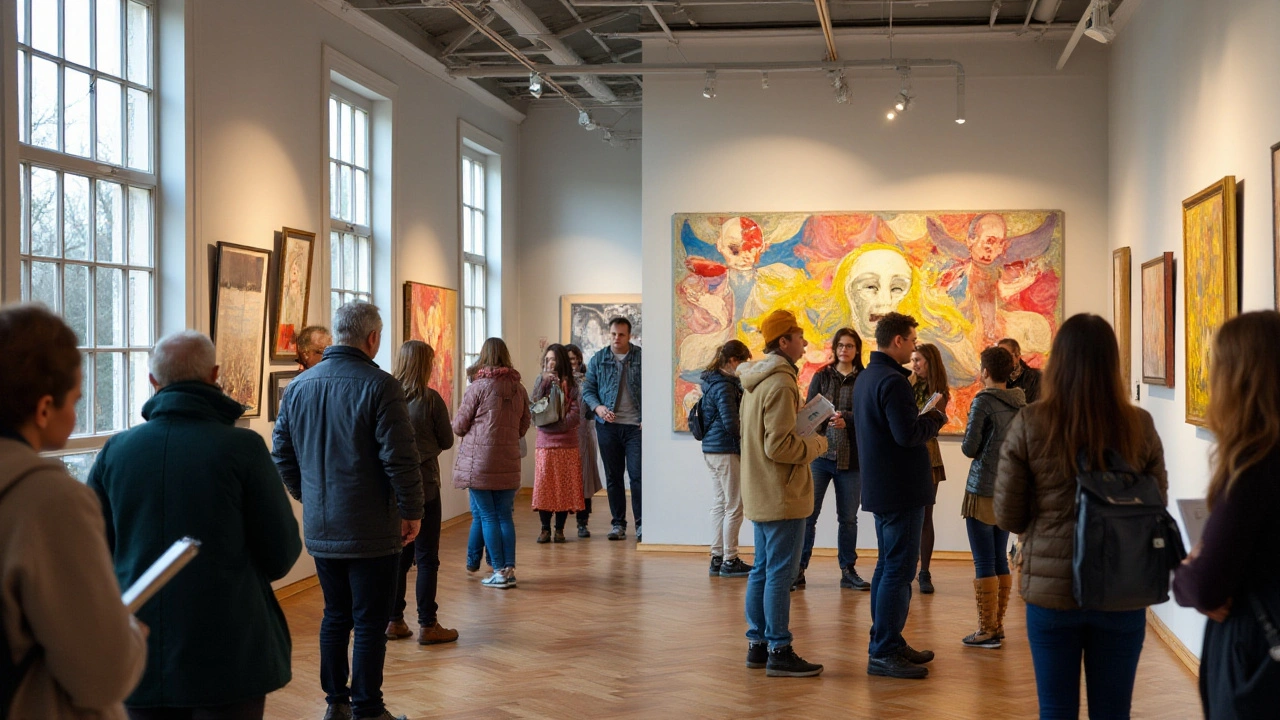
Engaging with Contemporary Art
Stepping into the world of contemporary art can feel like walking into an unfamiliar, yet exciting territory. But it’s in this space of discovery that the most enriching experiences often occur. The first and most important step is to cultivate a sense of openness and curiosity. Today’s visual art is rich with diverse expressions and mediums, each telling its own unique story.
Visiting art galleries and museums is one of the best ways to immerse yourself in contemporary artworks. These venues often feature rotating exhibits, showcasing both emerging and established artists. Spend time observing each piece; notice the details, colors, and textures. Don't shy away from reading the descriptions and learning about the artist’s intentions and inspirations. Many galleries also offer guided tours which can provide further insights and deepen your appreciation of the works on display.
Engaging with modern art isn’t limited to physical spaces. The digital age has brought art to our screens through virtual exhibitions and online galleries. Websites like Artsy and Saatchi Art offer vast collections of contemporary pieces which can be explored from the comfort of your home. Follow artists on social media platforms to get a behind-the-scenes look at their creative processes and stay updated on their latest works.
Another way to engage with contemporary art is by participating in art workshops or classes. Workshops not only provide the opportunity to learn new techniques but also to create your own art pieces. These classes often foster community and collaboration, offering a space where ideas can be shared and creativity can thrive. Local art fairs and festivals can also be wonderful places to meet artists, ask questions, and even purchase unique pieces to start or add to your art collection.
For those who wish to dive deeper, joining an art appreciation group or club can be incredibly rewarding. These groups often organize regular meet-ups, discussions, and viewings of new exhibitions. Being part of an art community allows for shared exploration and varied perspectives, which can deepen your understanding and enjoyment.
Sometimes contemporary art can be provocative or challenging. It might evoke strong emotions or leave you feeling puzzled. Embrace these reactions. Art is meant to provoke thought and conversation. Engage with it actively by journaling your thoughts or discussing with friends. Reflecting on why a particular piece resonates—or doesn’t—can offer profound insights into your own perspectives.
And remember, everyone’s interaction with art is personal and subjective. There are no right or wrong ways to engage with contemporary art. The key is to remain open, curious, and to allow the art to speak to you in its own way. As Jerry Saltz, senior art critic for New York Magazine, puts it,
"Art is for anyone. It just isn't for everyone."
Whether you're wandering the halls of a renowned museum, scrolling through an online gallery, or picking up a paintbrush yourself, each experience with contemporary art adds to a rich tapestry of personal cultural engagement. It’s a continually evolving relationship, one that enriches not just your understanding of art, but also your view of the world.

